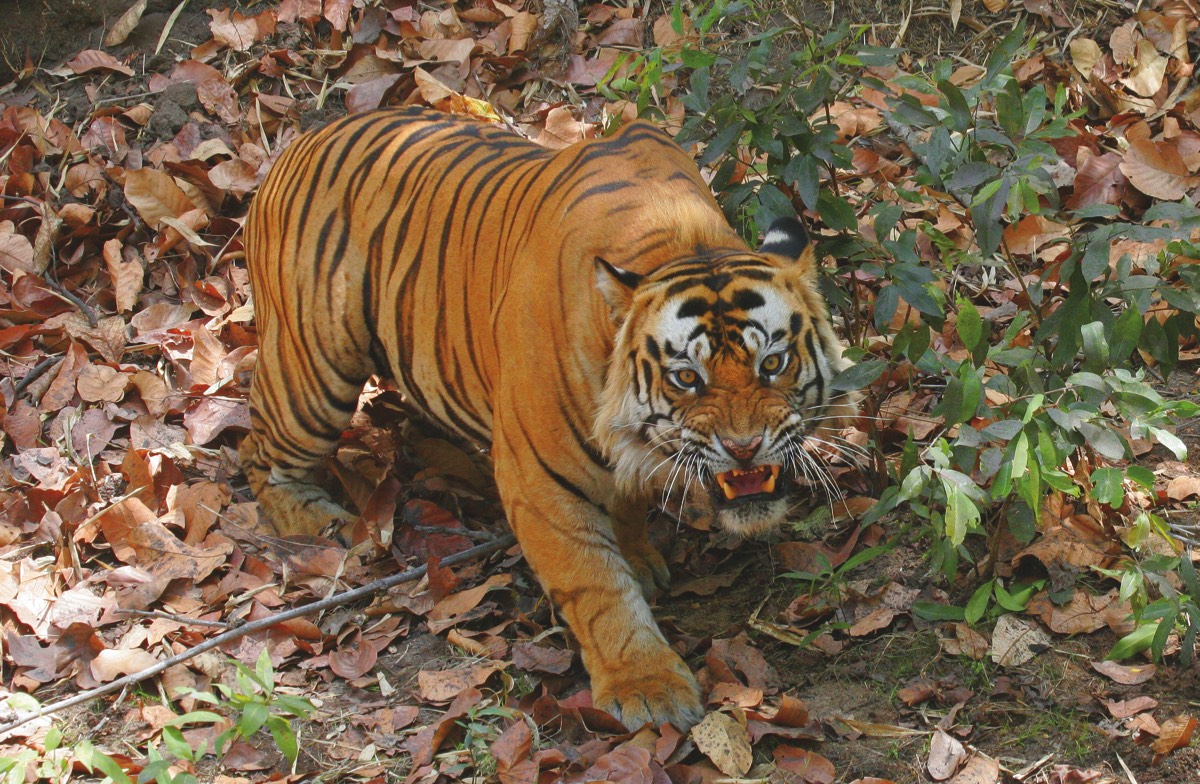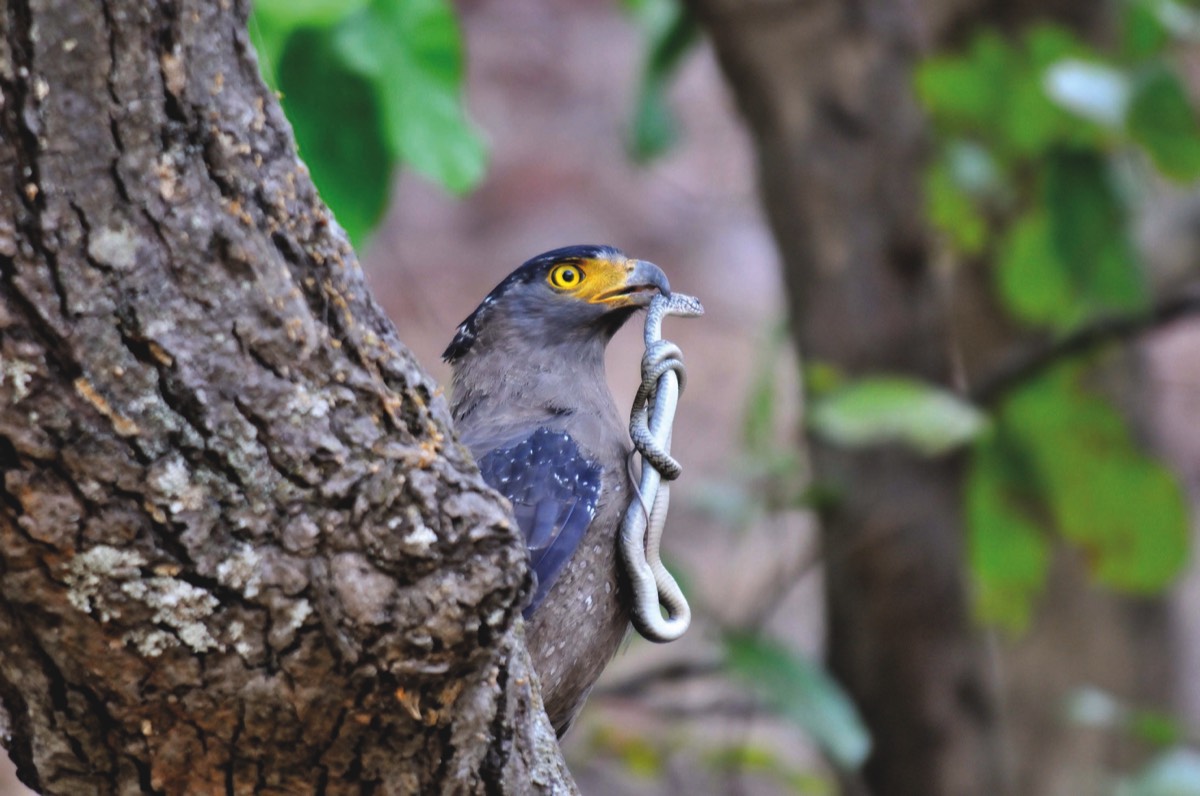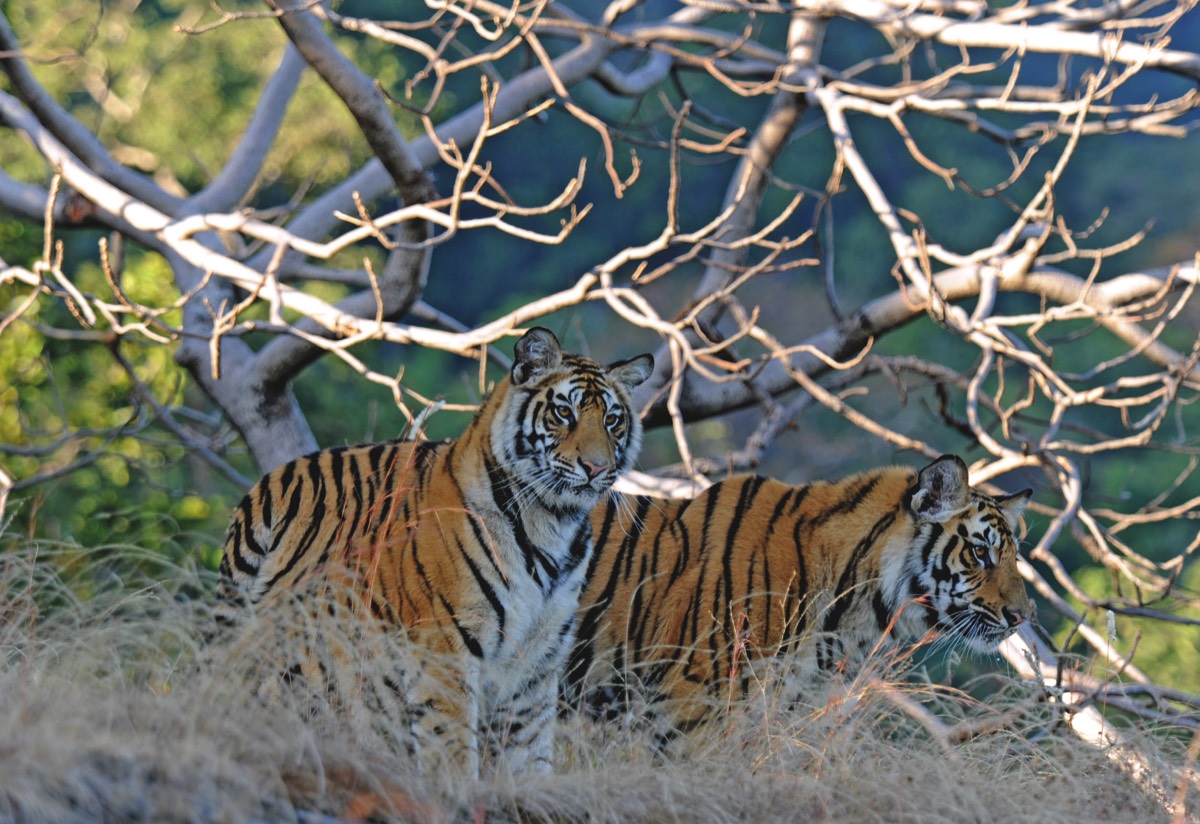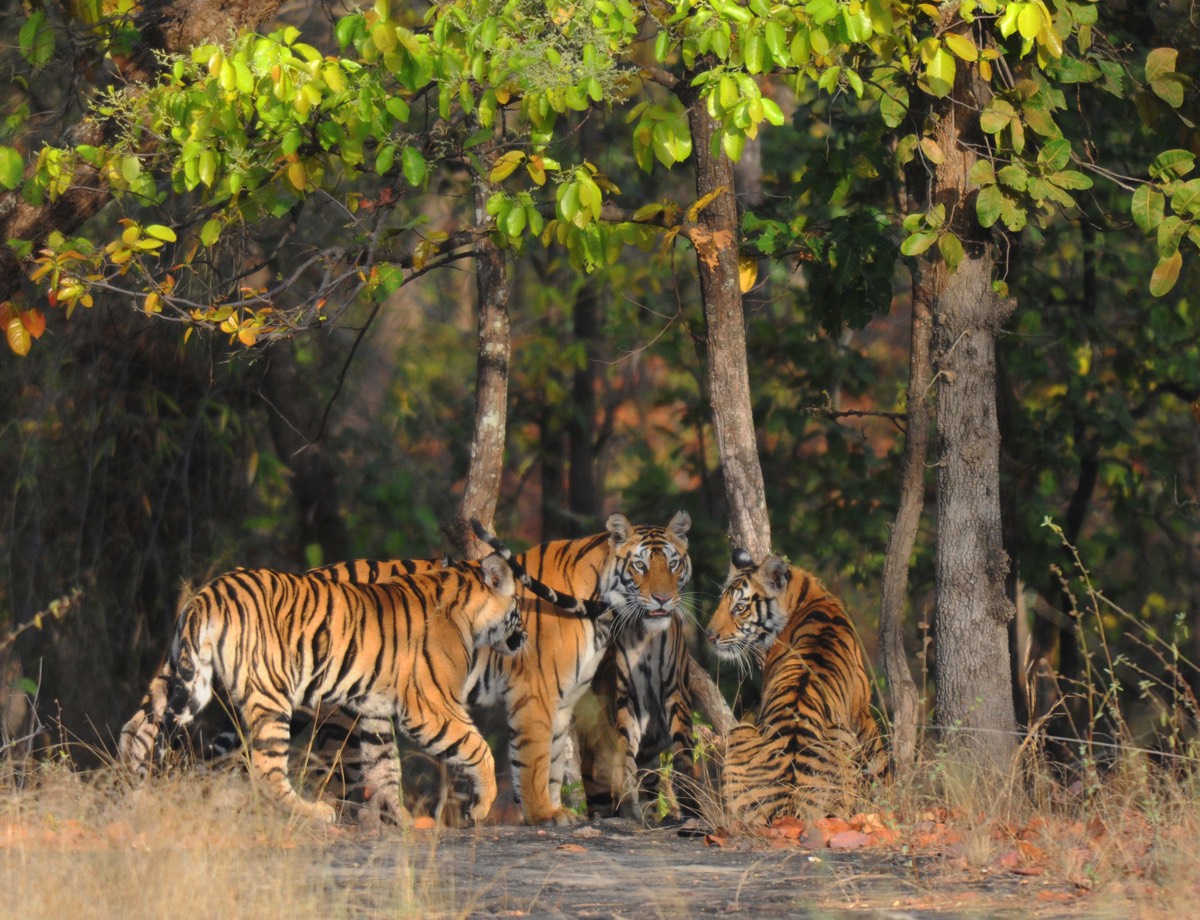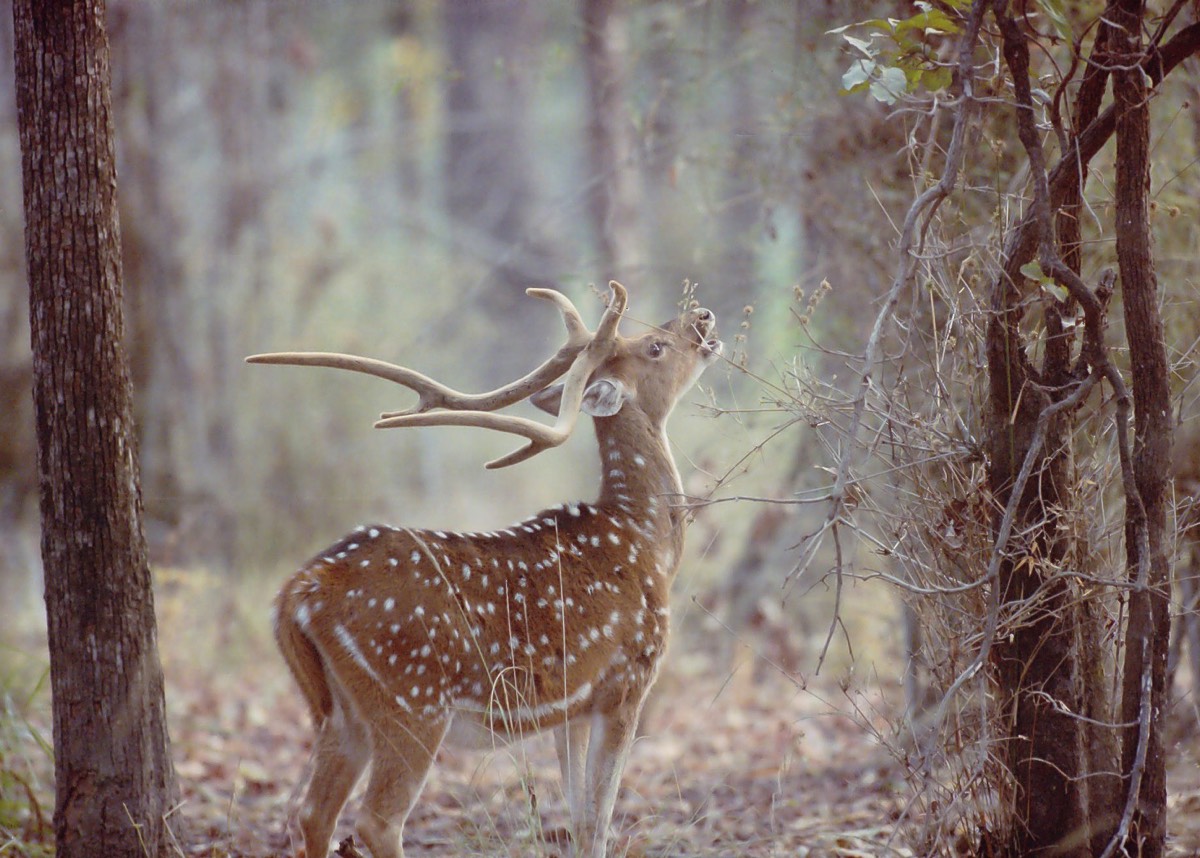TRAVEL
Surrey’s Premier Lifestyle Magazine
Where wilderness and history entwine
Bandhavgarh National Park in India was the former hunting preserve of the Maharaja of Rewa and is a famous natural habitat for Royal Bengal Tigers. Subhasish Chakraborty went in search of these elusive animals.
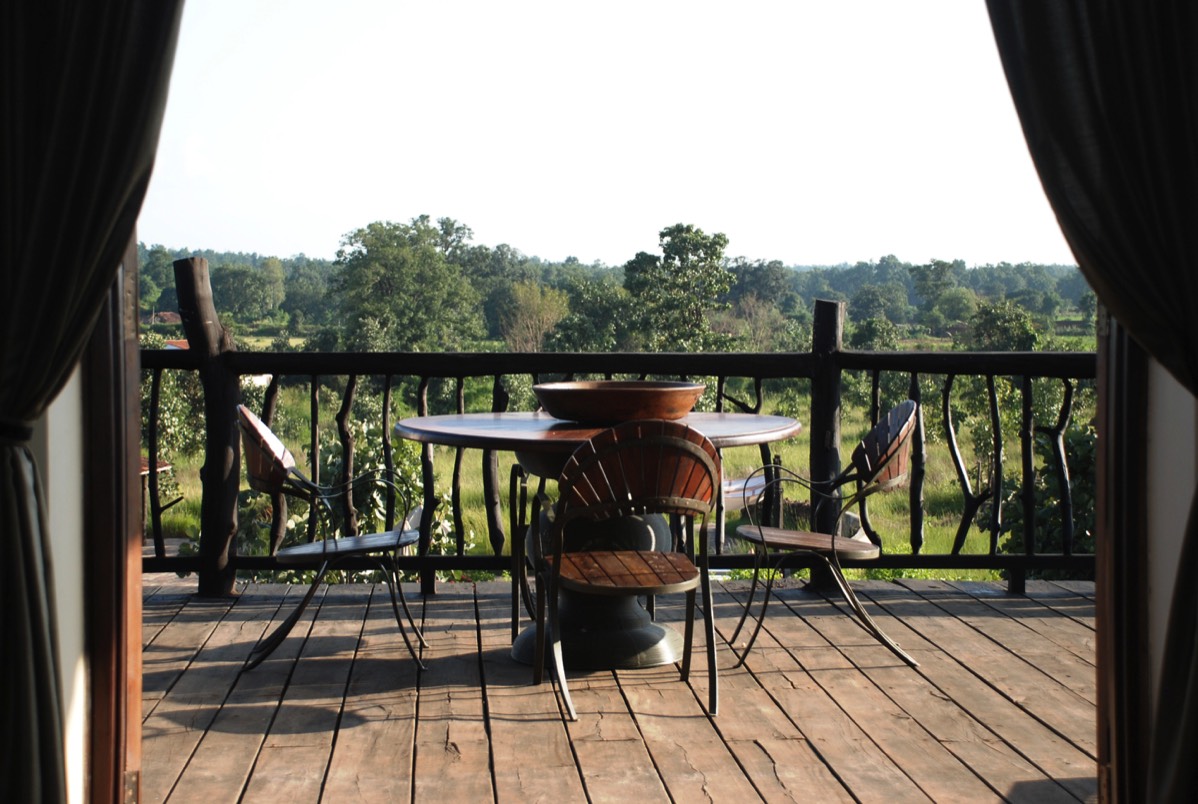
Many of us may marvel at the exciting holiday adventures other people choose. We’re not all Bear Grylls, so we can usually come up with a bucketful of excuses for not attempting anything out of our comfort zone. No time, not fit enough, too risky: I’m sure there are others to add to the list. The truth is travellers don’t have to be young to enjoy what may at first appear intimidating. Whether six or sixty, there’s a travel option that will provide an experience of a lifetime. How about tracking tigers then? India has some of the world’s best national parks and wildlife sanctuaries whose areas extend several thousands of square kilometres.
One such park is the world famous Bandhavgarh National Park in the state of Madhya Pradesh. Set among the Vindhyas, (a broken range of hills forming the southern escarpment of the central upland of India), Bandhavgarh is a relatively small park, but significantly has the highest known density of a tiger population in India. This is the mystical Royal Bengal Tiger’s territory.
Unique amongst India’s National Parks, Bandhavgarh has a rich historical past. Rarely will travellers come across a park or wildlife sanctuary so steeped in history. The finest example being the magnificent Bandhavgarh Fort, which forms the Park’s backdrop. There are no records to show when the fort was built, but it’s believed to be over 2,000 years old with references to it in ancient literature.
Several dynasties ruled the fort; the last ruler was the Maharaja of Rewa who converted it and its surrounding jungles into a hunting reserve for the sole use of the royal family. The Maharaja took pride in preserving the forest, but he did have a vested interest: that of satisfying his passion for tracking tigers. On arrival, lush greenery, the majestic Bandahvgarh Fort with its pastel grey clouds floating above, and rays of the evening sun delicately highlighting wooded shrubs where Steppe Eagles perch precariously present a breathtaking sight. Bandhavgarh is a haunting wilderness of astounding beauty that never ceases to heighten the senses. There’s a wonderful, wild isolation and peace in this part of the world.
Perched fifteen feet up in the fork of a tree, with a dart gun, is the park ranger who directs his team of trained tiger trackers riding elephants to brush their way through dense undergrowth. Somewhere in between both is a tiger sleeping off a meal from a kill made the previous night. The ranger is hoping the elephants will disturb the tiger and it will slink away from them and towards him. Animal alarm calls betray the tiger’s stealthy and silent progress through the forest. The ranger marvels at the ingenuity of his hunt assistants or Shikaris who invented this method, once employed by royalty to slaughter tigers (the record for an individual being 109 kills in a year). Today the process is used far more constructively to observe these cats and enable answers to basic questions such as how these animals exist in the wild.
One such park is the world famous Bandhavgarh National Park in the state of Madhya Pradesh. Set among the Vindhyas, (a broken range of hills forming the southern escarpment of the central upland of India), Bandhavgarh is a relatively small park, but significantly has the highest known density of a tiger population in India. This is the mystical Royal Bengal Tiger’s territory.
Unique amongst India’s National Parks, Bandhavgarh has a rich historical past. Rarely will travellers come across a park or wildlife sanctuary so steeped in history. The finest example being the magnificent Bandhavgarh Fort, which forms the Park’s backdrop. There are no records to show when the fort was built, but it’s believed to be over 2,000 years old with references to it in ancient literature.
Several dynasties ruled the fort; the last ruler was the Maharaja of Rewa who converted it and its surrounding jungles into a hunting reserve for the sole use of the royal family. The Maharaja took pride in preserving the forest, but he did have a vested interest: that of satisfying his passion for tracking tigers. On arrival, lush greenery, the majestic Bandahvgarh Fort with its pastel grey clouds floating above, and rays of the evening sun delicately highlighting wooded shrubs where Steppe Eagles perch precariously present a breathtaking sight. Bandhavgarh is a haunting wilderness of astounding beauty that never ceases to heighten the senses. There’s a wonderful, wild isolation and peace in this part of the world.
Perched fifteen feet up in the fork of a tree, with a dart gun, is the park ranger who directs his team of trained tiger trackers riding elephants to brush their way through dense undergrowth. Somewhere in between both is a tiger sleeping off a meal from a kill made the previous night. The ranger is hoping the elephants will disturb the tiger and it will slink away from them and towards him. Animal alarm calls betray the tiger’s stealthy and silent progress through the forest. The ranger marvels at the ingenuity of his hunt assistants or Shikaris who invented this method, once employed by royalty to slaughter tigers (the record for an individual being 109 kills in a year). Today the process is used far more constructively to observe these cats and enable answers to basic questions such as how these animals exist in the wild.
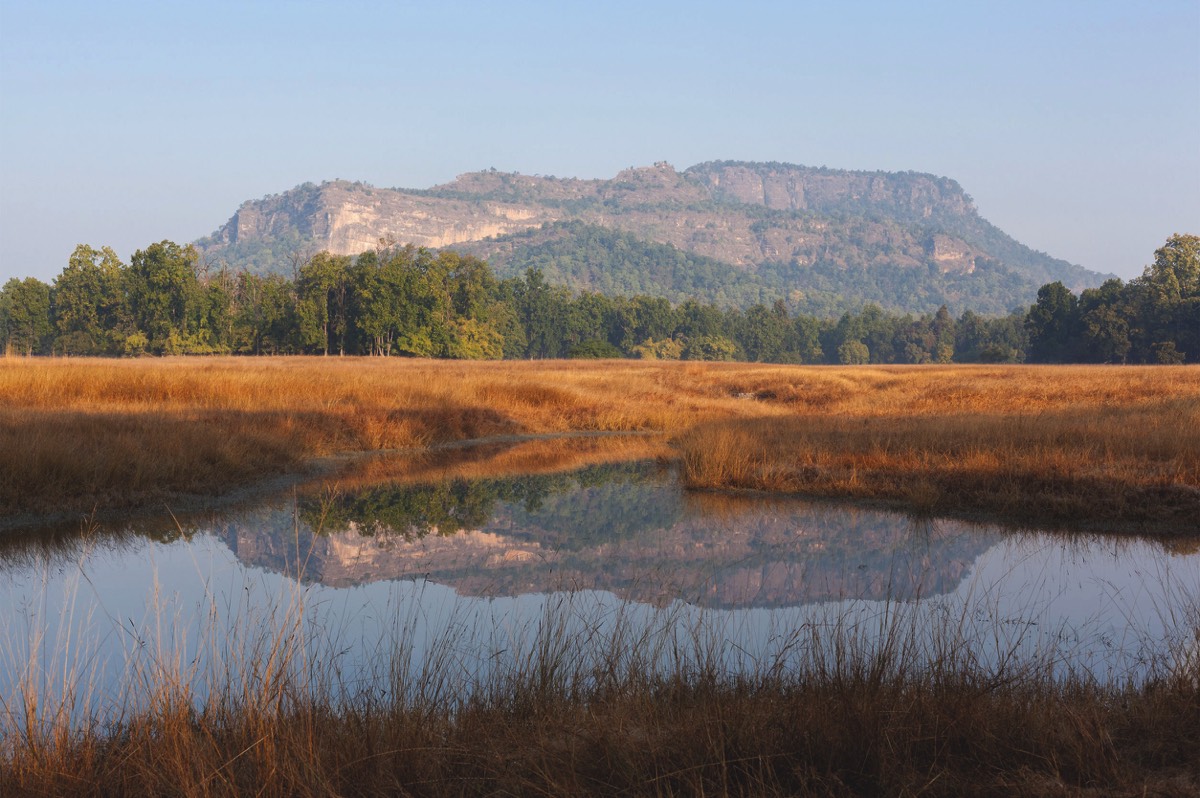
History of Bandhavgarh
Bandhavgarh is a legendary place, with the name ‘Bandhavgarh’ a combination of two words: Bandhavand Garh. Bandhav means brother and Garh means fort. The name Bandhavgarh was given to the reserve owing
to the ancient fort. Major dynasties ruled the Bandhavgarh regions of which The Baghels are believed to have done
so for the longest time.
During their rule, the Baghels decided to move their capital to Rewa and the Bandhavgarh region became a corner post of the kingdom and less populated. The thick forest became a perfect habitat for tigers. The Maharajas of Rewa bequeathed the land to the state government and in 1968 it was declared a national park. Measures have been taken to improve the conditions of the animals and prevent poaching, including water conservation and the relocation of villages to within the boundaries of the Park. A buffer zone was established and is patrolled by security, as is the core area.
Bandhavgarh fort Photo copyright: Anthony Brown | 123RF.COM
LOADING
It’s not all fun and excitement and a lot of patience is required. Well, who could blame these animals for avoiding human attention? During the expectant wait senses are heightened by the multitude of exotic noises emanating from the jungle. There are unforgettable rewards for entering this secret world. A ‘Mahut’ (master elephant rider) at Bandhavgarh told me that sometimes when tigers are looking for mates their deep roars reverberate across the stunning Bandhavgarh landscape. Tigers can chase leopards up trees, but for most of the day they sleep. These mystical animals are the main attraction at Bandhavgarh, but not the only one. Other wildlife includes the Chousingha (small four horned antelope), Chinkara gazelle, Nilgai antelope, Porcupine, Hyena and Rhesus Macaque monkeys.
With as many as 150 species nesting in Bandhavgarh’s favourable micro-climate, travellers don’t have to be dedicated twitchers to appreciate the astonishing variety of bird life. With the onset of winter, migratory birds flock into its marshy surrounds making a spectacularly colourful setting. Have a date with Paradise Fly Catchers, Golden and Black Headed Orioles, Yellow Ioras, Purple Sunbirds and Red Vented Bulbuls.
With each seasonal change a different spectacle unfolds as variations in the water level of the ‘beels’ cause different vegetation patterns to emerge. As a result food supplies vary and attract different numbers of birds. Temporary swamps and completely dry land in Bandhavgarh make a stark combination, biologically diverse, with conspicuous vegetation types and plant species. Each species of bird can be seen in separate colonies containing many thousands of individuals. These marshy areas delight with sudden flights or calls. The best time for watching is early morning and evening.
With as many as 150 species nesting in Bandhavgarh’s favourable micro-climate, travellers don’t have to be dedicated twitchers to appreciate the astonishing variety of bird life. With the onset of winter, migratory birds flock into its marshy surrounds making a spectacularly colourful setting. Have a date with Paradise Fly Catchers, Golden and Black Headed Orioles, Yellow Ioras, Purple Sunbirds and Red Vented Bulbuls.
With each seasonal change a different spectacle unfolds as variations in the water level of the ‘beels’ cause different vegetation patterns to emerge. As a result food supplies vary and attract different numbers of birds. Temporary swamps and completely dry land in Bandhavgarh make a stark combination, biologically diverse, with conspicuous vegetation types and plant species. Each species of bird can be seen in separate colonies containing many thousands of individuals. These marshy areas delight with sudden flights or calls. The best time for watching is early morning and evening.
Traveller fact file
Best time to visit: November to June (Bandhavgarh closes in July for the monsoon).Where to stay: Luxurious jungle accommodation is available at Junglemantra Safaris (junglemantrasafaris.com. Tel: 0091 762 728 0547, 0091 940 758 2955)
Samode Safari Lodge (www.samode.com/safarilodge. Tel: 0091 765 328 0579)
The Taj Mohua Kothi (www.tajsafaris.com. Tel: 1 800 111 825)
Bandhavgarh Jungle Lodge (www.bandhavgarhjunglelodge.com. Tel: (11) 268 53760/8656)
Forest Rest House (www.mpforest.org. Tel: 0091 076 532 22214)
Nearest town: Umaria, located 30 kilometres from Bandhavgarh.
Getting there: Nearest airport is Khajuraho, 210 kilometres from Bandhavgarh. From Khajuraho, taxis and buses are readily available.
For reservations contact: Field Director, Bandhavgarh National Park, P.O. Umaria, Dist: Shahdol, Madhya Pradesh, India.
Website: www.bandhavgarh-national-park.com
Climate: Due to its tropical monsoon climatic zone, Bandhavgarh National Park has a lush environment. Its altitude varies between 410 and 810 metres with 32 hills. Although the Park’s entire extent is 1,161 sq. km, tourists are restricted to the 105 sq. km of the Tala Range. Very biodiverse, this area attracts tigers to the core zone composed of four other zones: Magdhi, Kallwah, Khitauli and Panpatha. Winters are comparatively cool in the region and temperatures vary from almost freezing at night to around 68 degrees Fahrenheit during daytime. The tropical conditions of the forest make summer nights cooler than daytime temperatures of 104 degrees Fahrenheit. Rainfall averages 120cm per year.
In Bandhavgarh we were guests of the Samode Safari Lodge, easily one of India’s top ranked jungle hospitality destinations. The Lodge is innovatively constructed, has an ethnic décor and excellent furnishings. The wooden floor comes with two cosy fireplaces and breathtaking views of the jungle. Most visitors to Bandhavgarh make a point of using the luxurious spa. The Lodge is designed in the form of a necklace of ethnic villas: each one epitomising the grandeur of the fabled North-Indian hospitality all around the central lodge. Each villa offers a graceful living area, a lounge, well-appointed bedroom, plush bathroom and verandah with jungle views.
Dining offers surprises galore either indoors or out. The Lodge goes that extra mile to arrange truly romantic eating experiences out in the woods, by the sparkling poolside or even a balmy bonfire barbecue; the in-house bar is well stocked.
So, after a day in the wild, as I relaxed in my comfortable chair at the Lodge, a herd of deer were wending their way through the high grass and I was joined by Suzanne Haliwell, a keen British wildlife enthusiast. As the evening wore on and we moved seamlessly from beer to brandy, Suzanne talked increasingly about animal conservation and that if things fell into place how she would start her own zoo. I thought she was mad. How could anyone, except a millionaire, start her own zoo? Suzanne seemed undaunted; OK, Brits are a little eccentric at times, but hadn’t I heard of Benjamin Mee and Dartmoor Zoo? Read his book: ‘We Bought a Zoo’ which Hollywood turned into a film of the same name starring Matt Damon no less!
At dawn, as we set out, the forest still dark, and the elephants moving gracefully along in almost total silence, the morning sounds of Bandhavgarh percolate the air. Peacocks calling from nighttime roosts answered by the raucous barnyard crowing of Jungle Fowls, gaudy ancestors of the domestic chicken. Gray Langur monkeys give out a low self-satisfied hooting to greet the new day and warn one another to be alert. As the elephants traverse the track and the mirthful squirrel plays hide and seek, you may even see his majesty the tiger having forty winks and basking in the early sunlight. Here is Bandhavgarh, blue and green all around, providing an unfathomable mystery, the mystery that is Bandhavgarh.
Dining offers surprises galore either indoors or out. The Lodge goes that extra mile to arrange truly romantic eating experiences out in the woods, by the sparkling poolside or even a balmy bonfire barbecue; the in-house bar is well stocked.
So, after a day in the wild, as I relaxed in my comfortable chair at the Lodge, a herd of deer were wending their way through the high grass and I was joined by Suzanne Haliwell, a keen British wildlife enthusiast. As the evening wore on and we moved seamlessly from beer to brandy, Suzanne talked increasingly about animal conservation and that if things fell into place how she would start her own zoo. I thought she was mad. How could anyone, except a millionaire, start her own zoo? Suzanne seemed undaunted; OK, Brits are a little eccentric at times, but hadn’t I heard of Benjamin Mee and Dartmoor Zoo? Read his book: ‘We Bought a Zoo’ which Hollywood turned into a film of the same name starring Matt Damon no less!
At dawn, as we set out, the forest still dark, and the elephants moving gracefully along in almost total silence, the morning sounds of Bandhavgarh percolate the air. Peacocks calling from nighttime roosts answered by the raucous barnyard crowing of Jungle Fowls, gaudy ancestors of the domestic chicken. Gray Langur monkeys give out a low self-satisfied hooting to greet the new day and warn one another to be alert. As the elephants traverse the track and the mirthful squirrel plays hide and seek, you may even see his majesty the tiger having forty winks and basking in the early sunlight. Here is Bandhavgarh, blue and green all around, providing an unfathomable mystery, the mystery that is Bandhavgarh.
Each species of bird can be seen in separate colonies containing many thousands of individuals. These marshy areas delight with sudden flights or calls. The best time for watching is early morning and evening.




